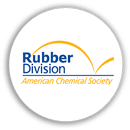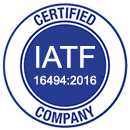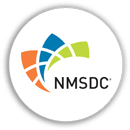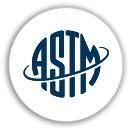ASTM D3578-19: Standard Specification for Rubber Examination Gloves
ASTM D3578-19 is an internationally recognized standard that establishes the quality, physical properties, and performance criteria for natural rubber latex examination gloves. These gloves are widely used in medical, laboratory, food handling, and industrial applications, ensuring adequate protection, durability, and comfort.
Compliance with ASTM D3578-19 ensures that gloves meet strict regulatory requirements, including barrier performance, tensile strength, and allergen control, making them suitable for healthcare professionals, scientists, and workers handling sensitive materials.
Purpose and Importance of ASTM D3578-19
The ASTM D3578-19 standard is designed to:
- Ensure Glove Quality: Establishes requirements for material composition, elasticity, and durability.
- Standardize Glove Dimensions: Defines sizing, thickness, and fit for consistent performance.
- Reduce Allergic Reactions: Controls latex protein content and powder residue to minimize health risks.
- Enhance Safety in Professional Settings: Ensures gloves provide adequate barrier protection against contaminants.
- Support Regulatory Compliance: Helps manufacturers meet FDA, OSHA, and international health standards for examination gloves.
Key Requirements in ASTM D3578-19
1. Material Composition
- Gloves must be manufactured using natural rubber latex.
- They should be free of visible defects, such as holes, tears, or surface irregularities.
2. Physical Properties
- Tensile Strength: The minimum required is 18 MPa before aging and 14 MPa after aging, ensuring durability.
- Elongation at Break: Must be at least 650% before aging and 500% after aging for flexibility and tear resistance.
- Thickness and Weight: Controlled to balance protection and tactile sensitivity.
3. Dimensions and Sizing
- Gloves are available in Small, Medium, Large, and Extra Large sizes.
- The palm width, finger length, and cuff dimensions are standardized for proper fit and comfort.
4. Powdered vs. Powder-Free Gloves
- Powdered gloves must use USP-grade cornstarch as a donning agent.
- Powder-free gloves undergo chlorination or polymer coating to reduce tackiness while remaining easy to wear.
- Regulatory note: Powdered gloves have been banned in certain medical applications by the FDA due to contamination risks.
5. Freedom from Holes (Barrier Integrity Test)
- Gloves must pass the water leak test, where 1,000 mL of water is poured into the glove for 2 minutes to check for leaks.
- The Acceptable Quality Level (AQL) for medical gloves is typically 2.5 or lower, meaning fewer than 2.5 defective gloves per 100 tested.
6. Protein and Chemical Residue Limits
- Reduces water-extractable protein levels to lower the risk of latex allergies.
- Ensures gloves do not contain harmful residual chemicals from manufacturing.
Impact of ASTM D3578-19 on Rubber and Plastic Gloves
1. Impact on Rubber Gloves
- Strengthens durability by setting high tensile strength and elongation requirements.
- Prevents allergenic reactions by limiting protein and chemical residue levels.
- Ensures proper barrier protection to prevent fluid penetration and contamination risks.
2. Impact on Plastic and Synthetic Gloves
- ASTM D3578-19 only applies to natural rubber latex gloves, but it influences the development of synthetic glove standards (such as ASTM D6319 for nitrile gloves).
- Encourages higher performance standards in vinyl, neoprene, and nitrile gloves to match the quality of latex gloves.
Applications of ASTM D3578-19 Gloves
ASTM D3578-19 is widely used in industries requiring high-quality, disposable examination gloves, including:
- Healthcare & Medical Settings: Used by doctors, nurses, dentists, and first responders for infection control.
- Laboratories & Research Facilities: Ensures safety in handling biological samples, hazardous chemicals, and sensitive materials.
- Food Handling & Processing: Protects food workers from cross-contamination and exposure to foodborne pathogens.
- Industrial & Manufacturing: Provides hand protection for electronics, pharmaceuticals, and quality control processes.
Benefits of ASTM D3578-19 Compliance
- Improves Glove Quality: Ensures tear-resistant, stretchable, and durable latex gloves.
- Enhances Safety & Hygiene: Prevents leakage and contamination in sensitive environments.
- Reduces Allergy Risks: Limits latex protein content and chemical residues for safer glove use.
- Regulatory Approval: Helps gloves meet FDA, OSHA, and international health regulations.
- Increases Consistency in Manufacturing: Provides a uniform standard for sizing, strength, and performance.
Challenges in ASTM D3578-19 Compliance
- Latex Allergy Concerns: Even with low-protein formulations, latex gloves may still trigger allergic reactions in some users.
- Manufacturing Costs: Ensuring high-quality natural rubber latex and maintaining low defect rates increases production expenses.
- Powdered Glove Restrictions: Many countries, including the United States (FDA), have banned powdered gloves in medical settings.
Industries Benefiting from ASTM D3578-19
Industries that rely on ASTM D3578-19 include:
- Medical & Healthcare: Hospitals, clinics, dental offices, and emergency services.
- Biotechnology & Laboratories: Pharmaceutical research, chemical testing, and quality control.
- Food & Beverage Processing: Food handling, catering, and commercial kitchens.
- Manufacturing & Industrial Safety: Cleanroom applications, electronic assembly, and packaging.








